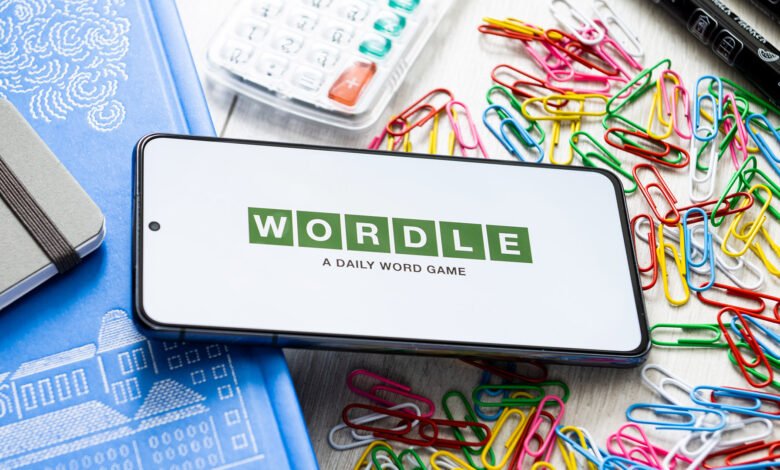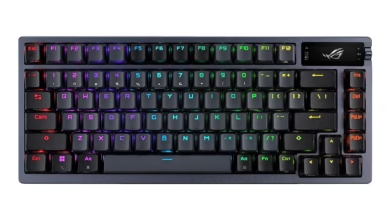Wordle NYT: How a Simple Word Game Became a Global Obsession

It started with a simple concept: guess a five-letter word in six tries. No flashy graphics. No in-app purchases. Just a blank grid and a challenge. That’s Wordle—and in a world overloaded with apps and attention-grabbing content, it somehow managed to quietly conquer the internet. Now owned and published daily by The New York Times (NYT), Wordle NYT has become a staple in millions of people’s daily routines.
But how did this unassuming little game explode in popularity? Why did The New York Times buy it? And what’s changed since then? Let’s dive into the fascinating journey of Wordle NYT—from its humble beginnings to its current role as a global word game phenomenon.
The Origins of Wordle: A Love Letter Turned Viral Sensation
Wordle wasn’t born in a corporate boardroom or a Silicon Valley startup incubator. It was created by Josh Wardle, a Brooklyn-based software engineer, who originally made the game as a gift for his partner.
From Private Hobby to Public Hit
Josh developed Wordle as a private game for his word-loving partner during the pandemic. It was a simple, ad-free experience, with no goal other than to guess the word of the day. In 2021, he decided to release it publicly—and within months, it spread like wildfire across Twitter, Reddit, and group chats around the world.
People weren’t just playing it—they were sharing their results, comparing strategies, and creating memes Wordle NYT. The built-in spoiler-free sharing feature (those colored boxes you’ve probably seen everywhere) became a viral vehicle that helped the game explode without a single dollar spent on marketing.
A Refreshing Break from Doomscrolling
What made Wordle stand out was its minimalism and the fact that you could only play once per day. No ads, no pop-ups, no pay-to-win. Just one word, six tries, and a fresh start tomorrow. In a digital world that constantly tries to hook your attention, Wordle offered a quiet, satisfying brain teaser—and that was exactly what people were craving.
The New York Times Acquisition: A Smart Move or a Corporate Takeover?
As Wordle’s popularity surged, so did interest from media companies. In early 2022, The New York Times Company acquired Wordle from Josh Wardle for a price “in the low seven figures.” This caused a mix of excitement and anxiety in the Wordle community.
Why Did NYT Buy Wordle?
For The New York Times, this wasn’t just a random acquisition. It was a strategic move to expand their digital games portfolio, which already included the NYT Crossword, Spelling Bee, and The Mini. Wordle fit perfectly into their brand as a smart, daily challenge that encouraged consistent engagement.
Plus, Wordle’s success proved it had staying power. NYT didn’t want to miss out on the opportunity to draw in a younger, tech-savvy audience, and the daily word game provided just the hook they needed.
The Fan Reaction: Cautious Optimism
When NYT took over, Wordle fans were understandably nervous. Would the game stay free? Would it be stuffed with ads or locked behind a paywall? Would the beloved simplicity be lost in a corporate makeover?
To their credit, NYT reassured users that the game would remain free—at least for now—and they’ve largely kept the original format intact. While some minor tweaks have been made (like syncing with NYT accounts), the core gameplay is still the same.
What’s Changed Since the Acquisition?
Since becoming Wordle NYT, the game has seen subtle shifts. The word list has been slightly refined to remove obscure or offensive words, and NYT added an account feature so players can track their stats across devices. It’s also better integrated with the NYT Games section, which allows for more exposure to their other puzzles.
Overall, NYT has handled the transition relatively smoothly, managing to maintain Wordle’s charm while smartly leveraging it to promote their broader digital platform.
How Wordle NYT Works: Rules, Strategy, and the Joy of Solving
At its core, Wordle NYT is simple. But mastering it? That takes a bit more brainpower and a dash of strategy.
The Basics: How to Play Wordle
Each day, Wordle presents you with a new five-letter word to guess. You have six attempts to figure it out. After each guess:
- Green means the letter is in the correct spot.
- Yellow means the letter is in the word, but in the wrong position.
- Gray means the letter isn’t in the word at all.
It’s a blend of deduction, vocabulary, and logic—all in a tight, elegant format.
Wordle Strategy 101: Tips for Success
If you’re new to Wordle NYT, here are a few strategies that seasoned players swear by:
- Start strong with a word that includes common vowels and consonants. Words like “SLATE,” “CRANE,” or “AUDIO” are popular openers.
- Avoid repeating letters too early unless you have a reason to.
- Pay attention to letter patterns. Once you get a few greens or yellows, start thinking about common letter combinations like “TH,” “SH,” “ER,” or “ING.”
Most importantly? Don’t rush. Part of Wordle’s appeal is that it invites you to slow down and really think.
The Joy of Completion
There’s something incredibly satisfying about seeing those green tiles line up. Whether you get it in two tries or six, it’s a mini celebration of your brainpower. And since it only takes a few minutes, it’s easy to slot into your morning coffee routine or late-night wind-down.
Why Wordle NYT Continues to Thrive in a Crowded Game Market
Thousands of games get released every year, and most fade into the noise. So why is Wordle NYT still going strong?
Social Sharing Without the Spoilers
Wordle became a cultural phenomenon partly because of its brilliant spoiler-free share feature. Those green, yellow, and gray squares let players share their results without ruining the solution. It turned Wordle into a daily social ritual. Whether it’s your family group chat or Twitter timeline, Wordle results foster casual, feel-good competition.
Accessibility and Inclusivity
You don’t need a gaming console, a fast computer, or even an app. Wordle NYT runs in any browser, on any device. It’s free, lightweight, and doesn’t require a tutorial to start. This accessibility is a huge part of its universal appeal.
And because the word is the same for everyone each day, it creates a shared experience, regardless of where you are in the world.
A Mental Health-Friendly Game
Unlike games designed to keep you hooked with infinite levels, leaderboards, and flashy rewards, Wordle offers one word per day—then it’s done. There’s no pressure to keep playing, no microtransactions, and no notifications.
In a world filled with overstimulation and digital noise, Wordle NYT is a soothing, brain-boosting break.
The Future of Wordle NYT: What’s Next for the Internet’s Favorite Puzzle?
So, what lies ahead for Wordle under the NYT umbrella? While no one has a crystal ball, there are a few trends and possibilities worth keeping an eye on.
More Features or Leave It Alone?
Some fans worry that NYT might add too many features or start monetizing the game more aggressively. So far, though, the updates have been fairly restrained. Optional logins, stat tracking, and integration with NYT Games are the extent of it.
Whether NYT will eventually place Wordle behind a paywall is still uncertain. For now, they seem to understand the value in keeping it widely accessible and free—at least to attract new subscribers to their larger games platform.
Variations and Spin-Offs
Since Wordle’s rise, there’s been an explosion of spin-off games like:
- Quordle (four words at once)
- Heardle (guess the song)
- Worldle (geography-based)
- Squabble (real-time Wordle battle)
NYT could explore its own variations or spin-offs—but they’ll need to balance innovation with keeping the original game’s spirit intact.
Wordle’s Place in NYT’s Long-Term Game Strategy
The New York Times has made it clear they’re investing heavily in digital games as part of their future. Wordle is likely to be a centerpiece of that strategy—not just as a standalone game, but as a gateway into their ecosystem.
If they continue to respect the simplicity that made Wordle a success, it could thrive for years to come.
Final Thoughts: Wordle NYT Is More Than Just a Game
Wordle NYT isn’t just a word puzzle. It’s a cultural touchstone, a daily tradition, a brain teaser, and a small source of joy in an otherwise chaotic digital world. Whether you’re a casual player or a devoted strategist, there’s something undeniably charming about guessing that one perfect word.
In a time when so much content fights for our time and attention, Wordle stands out by doing the opposite—it invites us to slow down, think clearly, and enjoy a moment of mental clarity. And maybe that’s the real secret to its success.



